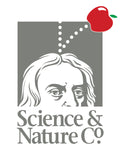
Fifty Minerals that Changed the Course of History is a beautifully presented guide to the minerals that have had the greatest impact on human civilization. These are the materials used from the Stone Age to the First and Second Industrial Revolutions to the Nuclear Age and include metals, ores, alloys, salts, rocks, sodium, mercury, steel and uranium. The book also includes minerals used as currency, as jewelry and as lay and religious ornamentation when combined with gem minerals like diamonds, amber, coral, and jade.
Entries are organized by name and considered for their influence in four categories: Industrial, Cultural, Commercial and Scientific. More than 200 elegant drawings, photographs, paintings and excerpts from literature highlight the concise text.
Examples of the fifty minerals are:
- Diamonds: Did a necklace ordered by Louis XV precipitate the French Revolution?
- Sulphur: The biblical brimstone now used in organic farming.
- Clay: The oldest ceramic object is not a cooking pot or drinking bowl, but a statuette.
- Arsenic: Was Napoleon murdered while imprisoned on the island of St. Helena?
- Coal: The Romans invented the first central heating system.
- Saltpeter: China's fourth "Great Invention" was perhaps not so great after all.
- Salt: Once used as currency, we give it little thought today.
- Jade: The Chinese fabric of "pajamas for eternity."
Ubiquitous or rare, the minerals described in Fifty Minerals that Changed the Course of History have been fundamental to human progress, for good or evil. Many are familiar--the aluminum can we drink from, the car we drive, the jewelry we wear. They can be poisons, medicines or weapons, but wherever found and however used, their importance can be easily overlooked. This attractive reference gives us fascinating insight into our undeniable dependence on minerals.
Review
--The Globe and Mail
The brief sections are consistently interesting, and plenty of supplemental illustrations and photos make this a handsome volume...best-suited to curious kids and casual mineralogists. (Publishers Weekly 2012-07-01)
This is a beautiful book, nicely bound and richly illustrated... written in an easy to read, casual style. It may be of interest to middle or high school students, or their teachers who are looking for some historical background on these minerals. It is also suitable for the layperson. (Blaise J. Arena, Arena Consulting, Des Plaines, IL Science Books and Film 2013-05-01)
Gives a fascinating perspective on the scope of human development. (Foreword Reviews 2012-09-20)
This series...has hit the nail on the head again. (Globe and Mail, Christmas 2012 Gift Book List 2012-12-08)
Believe me, once you start mining this book, you'll have no trouble digging out nuggets of fascinating information! (Jan Johnston The Columbian (Vancouver, WA) 2012-12-09)
About the Author
Eric Chaline is a journalist and writer. He is the author of Fifty Animals that Changed the Course of History, as well as numerous titles on philosophy and history. He lives in the UK, where he is conducting doctoral research in sociology at South Bank University, London.





